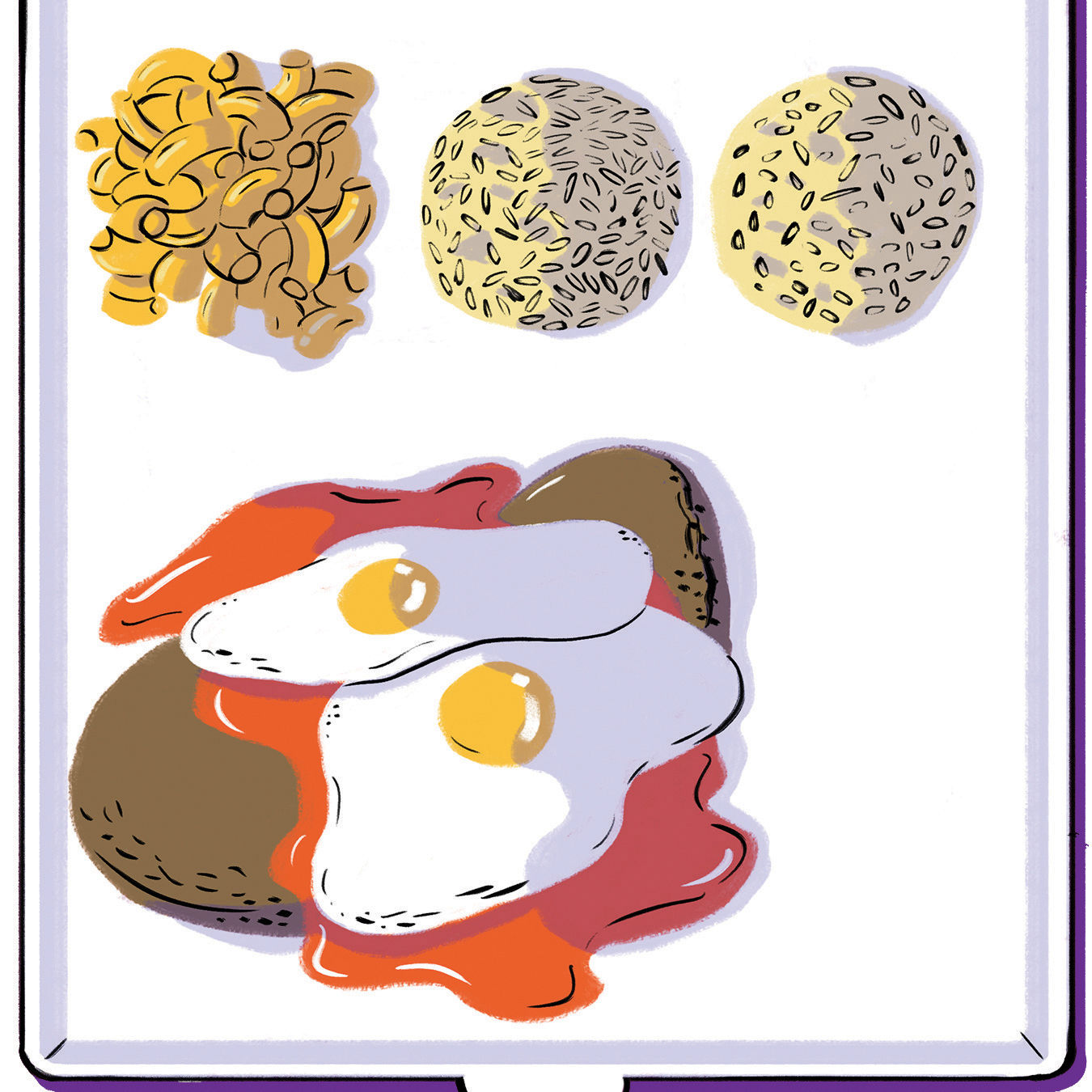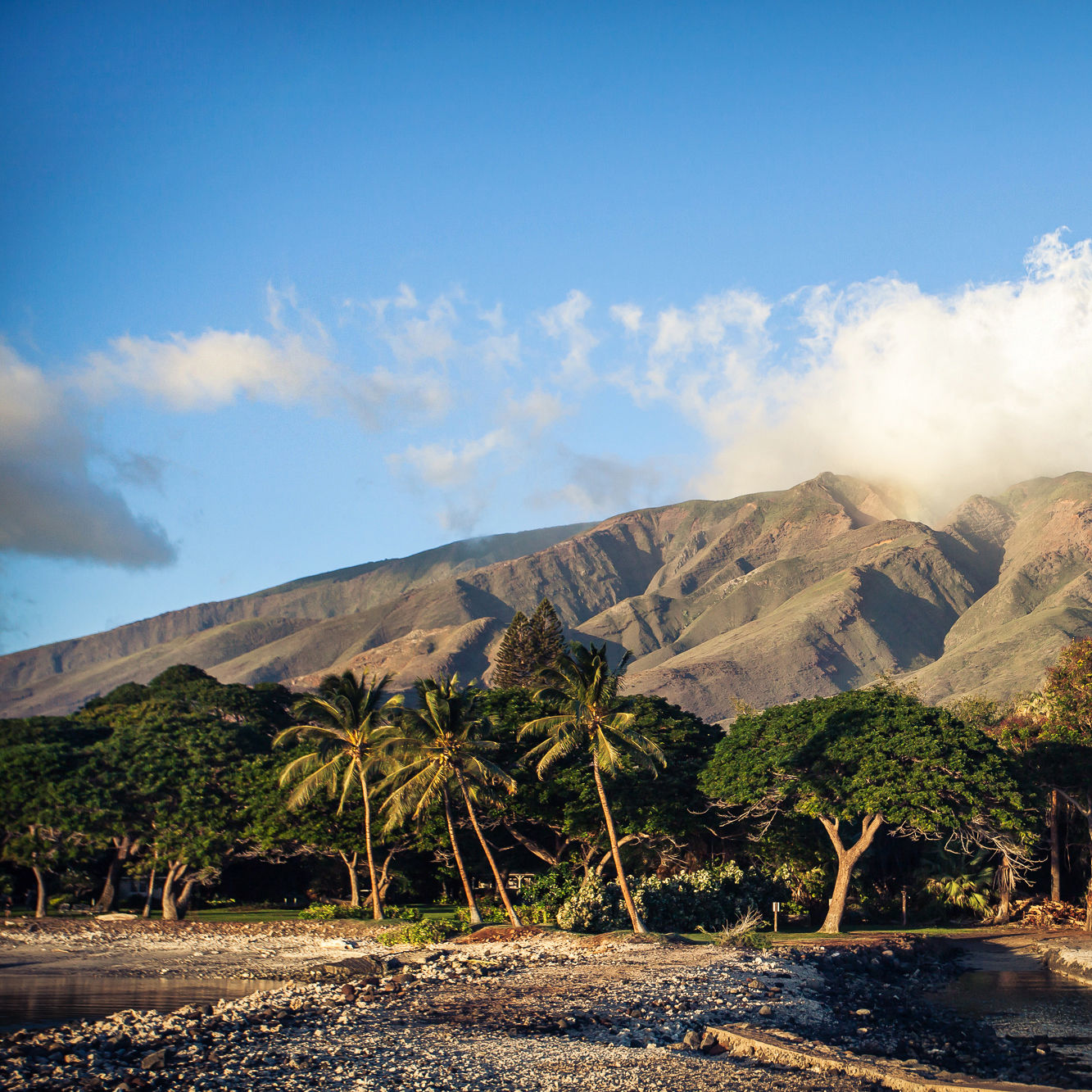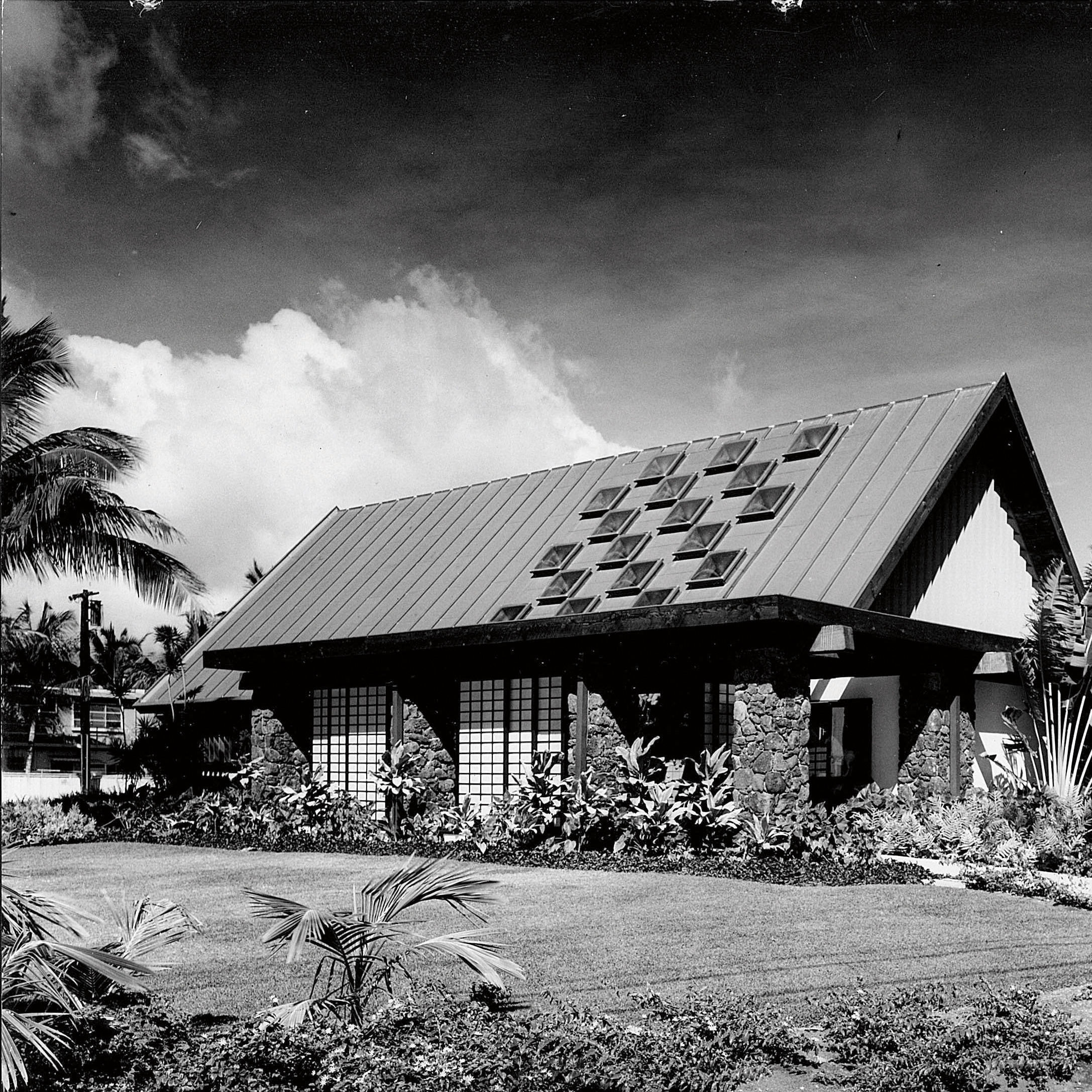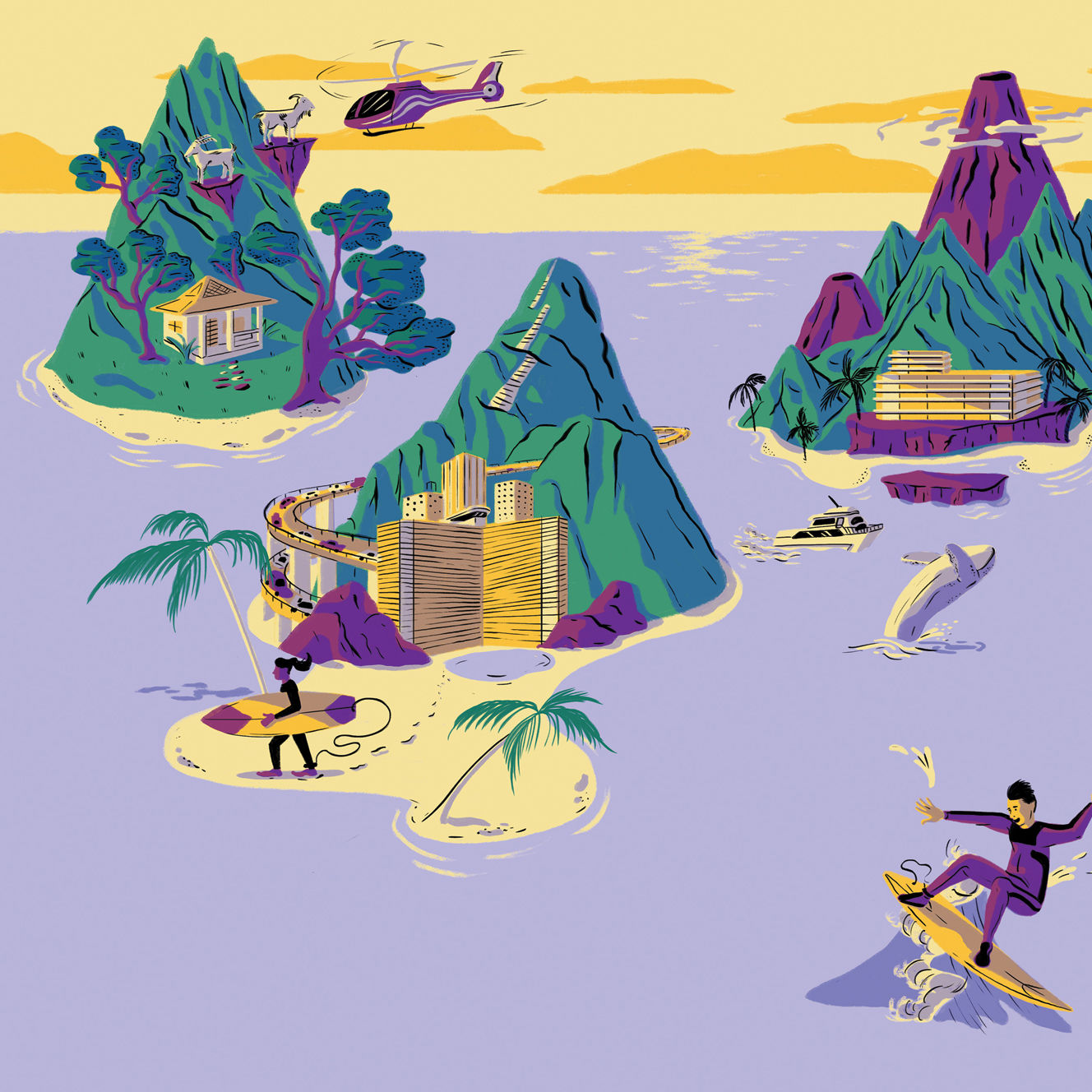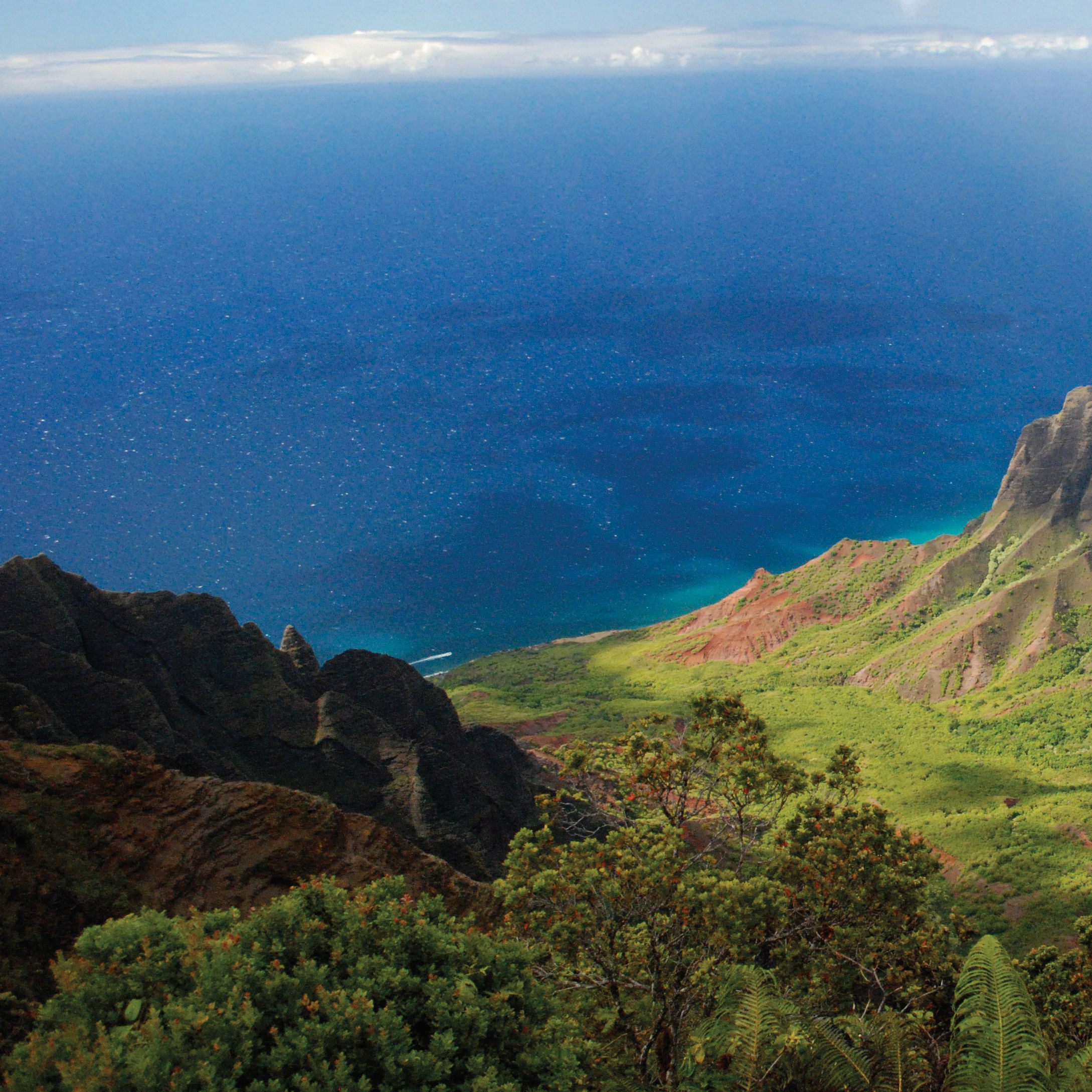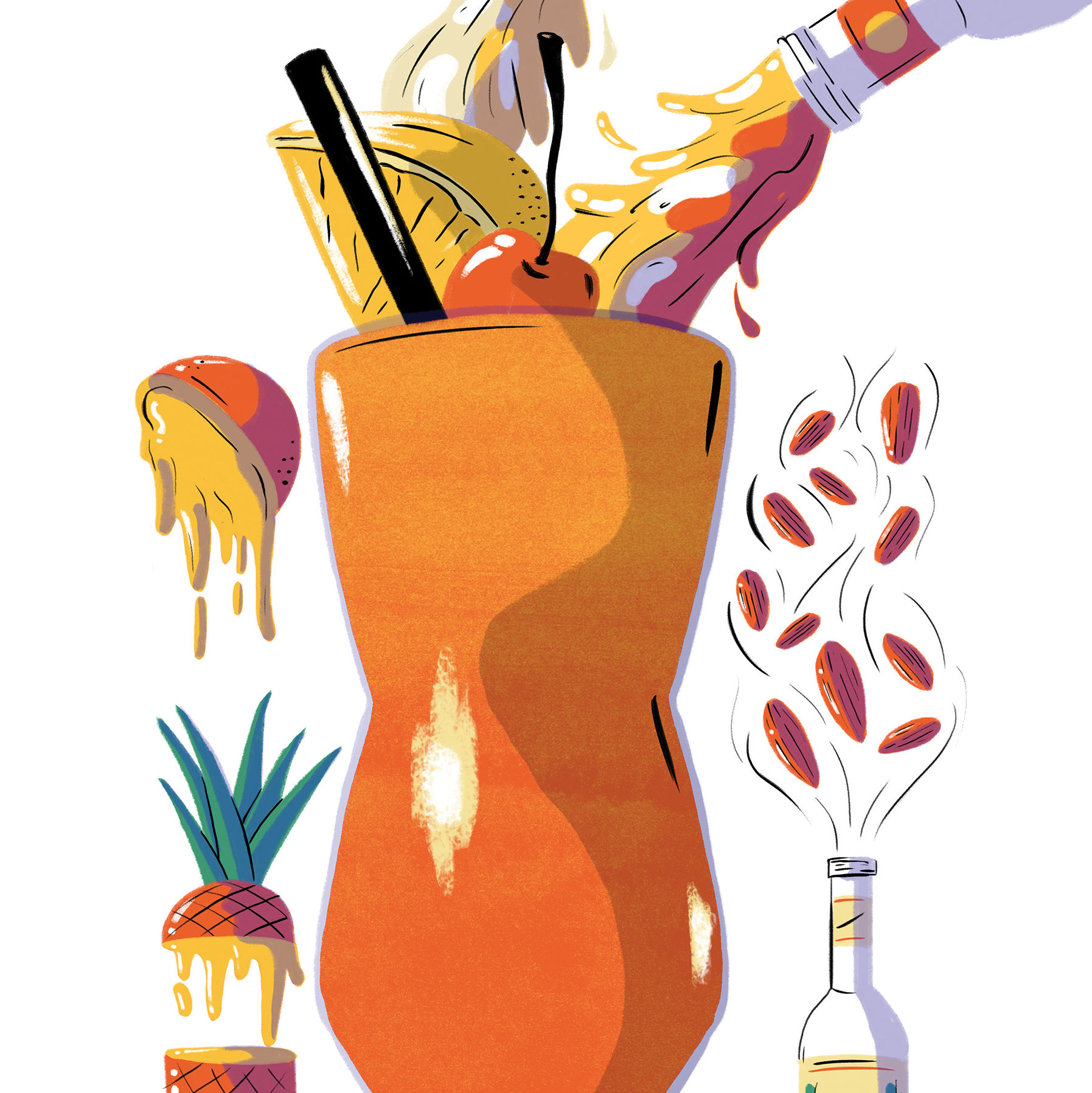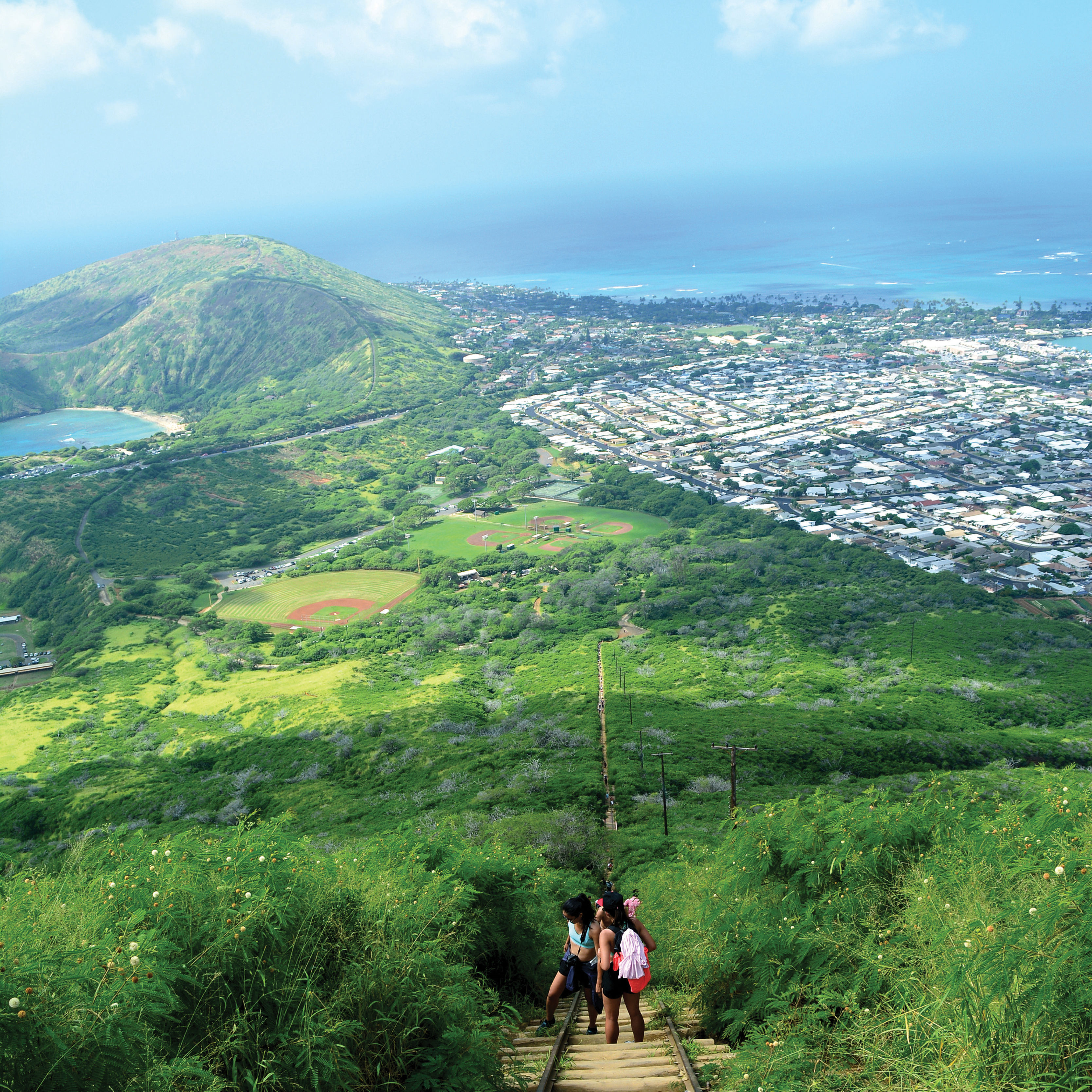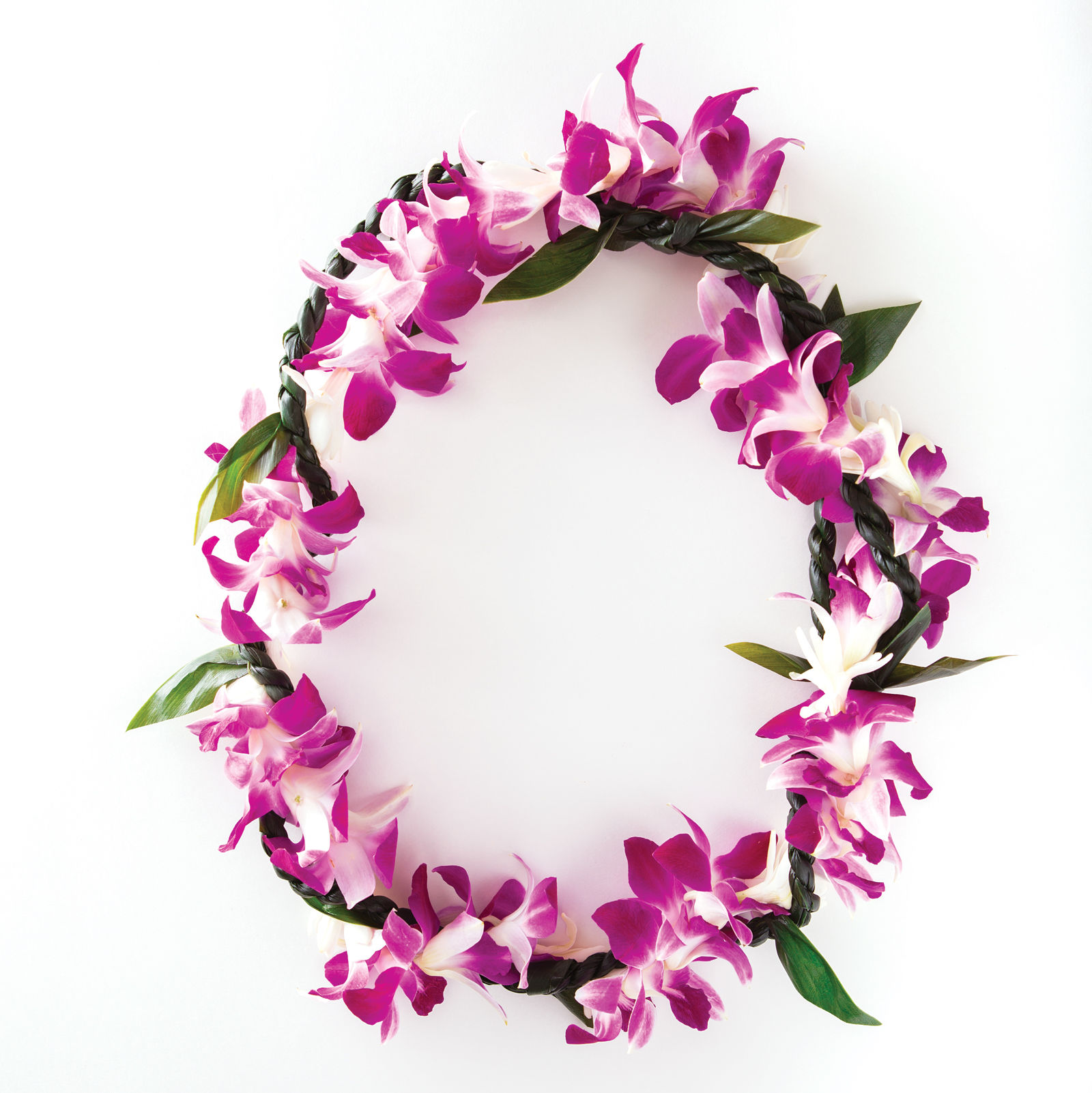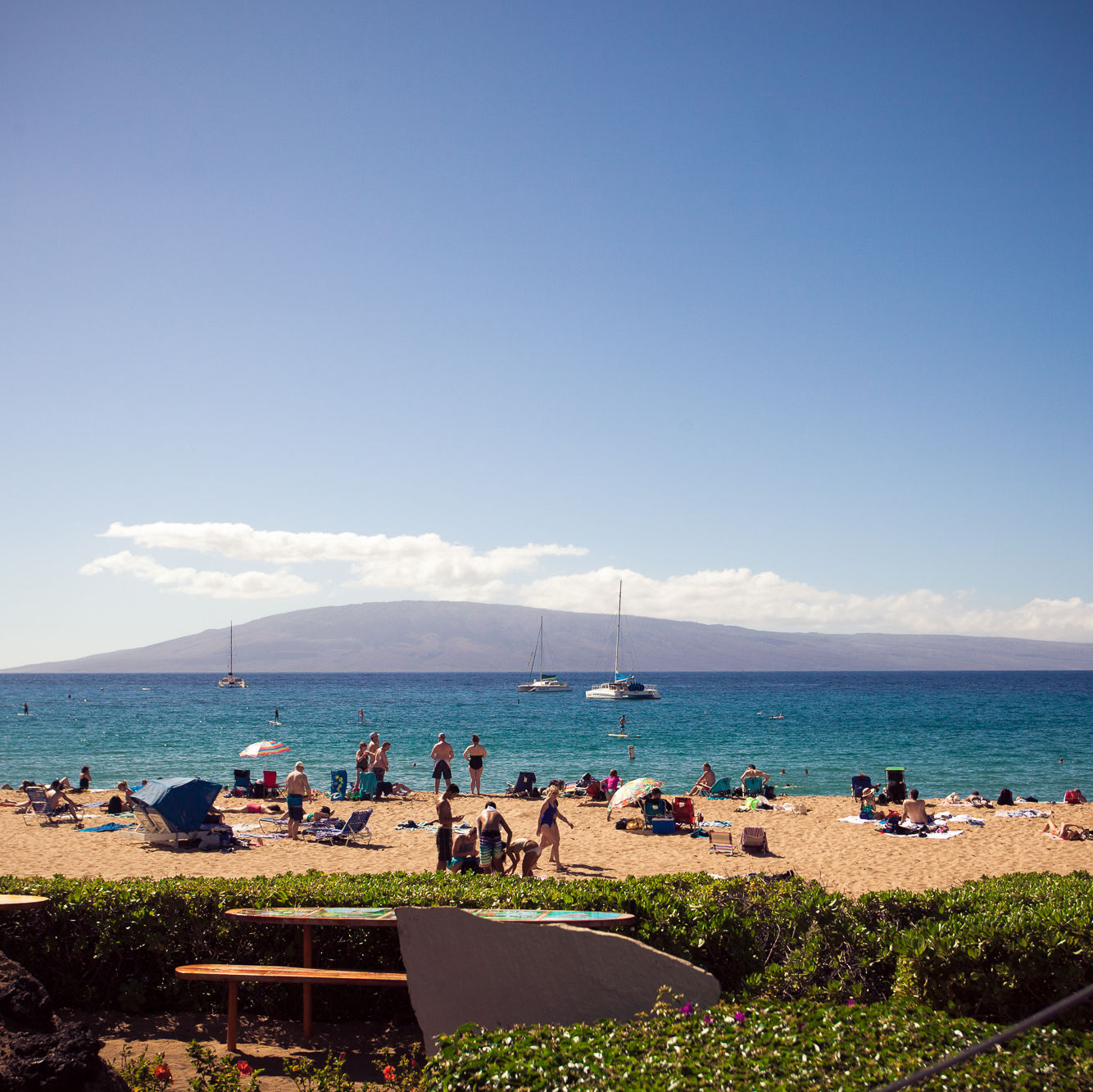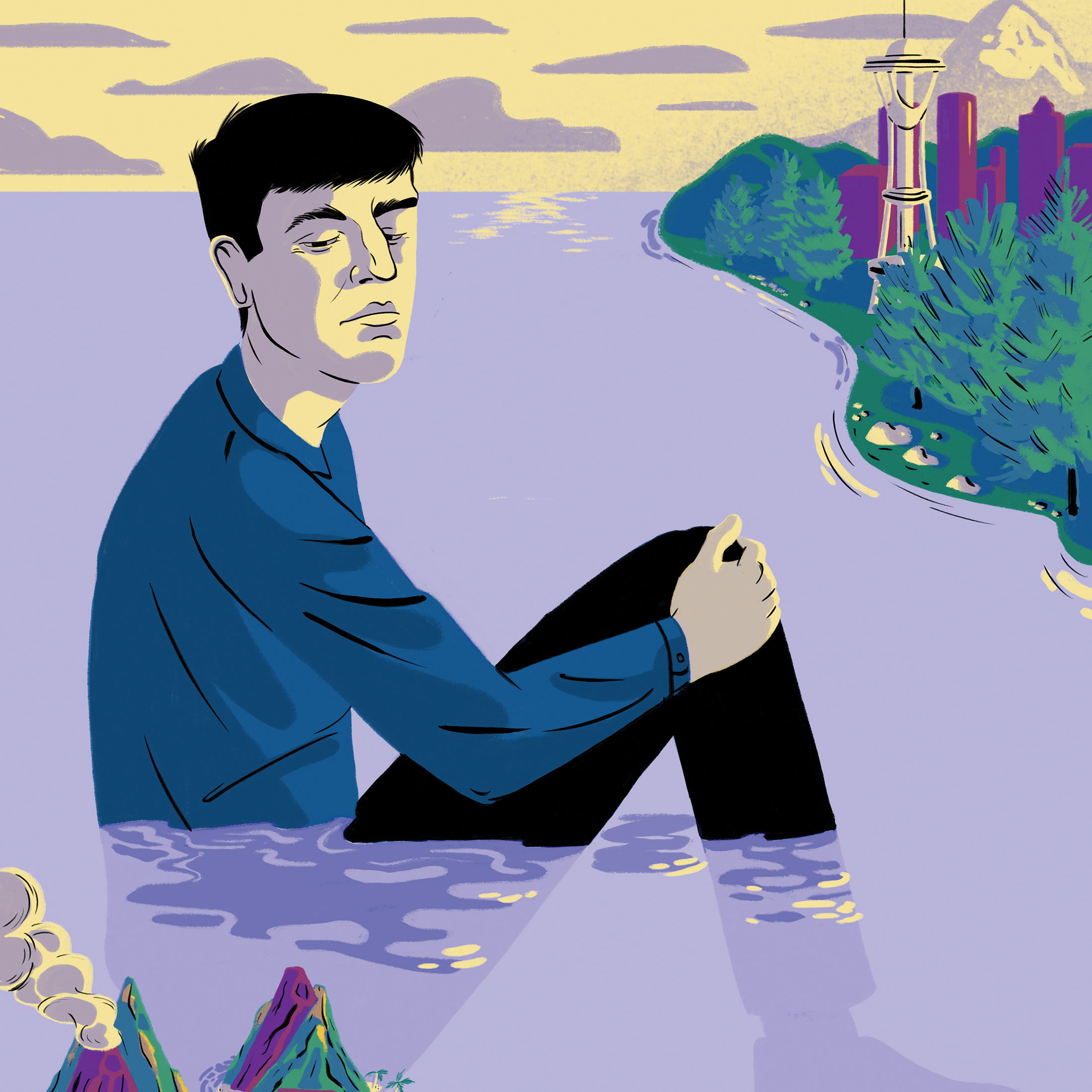The Seattleite’s Guide to the Big Island
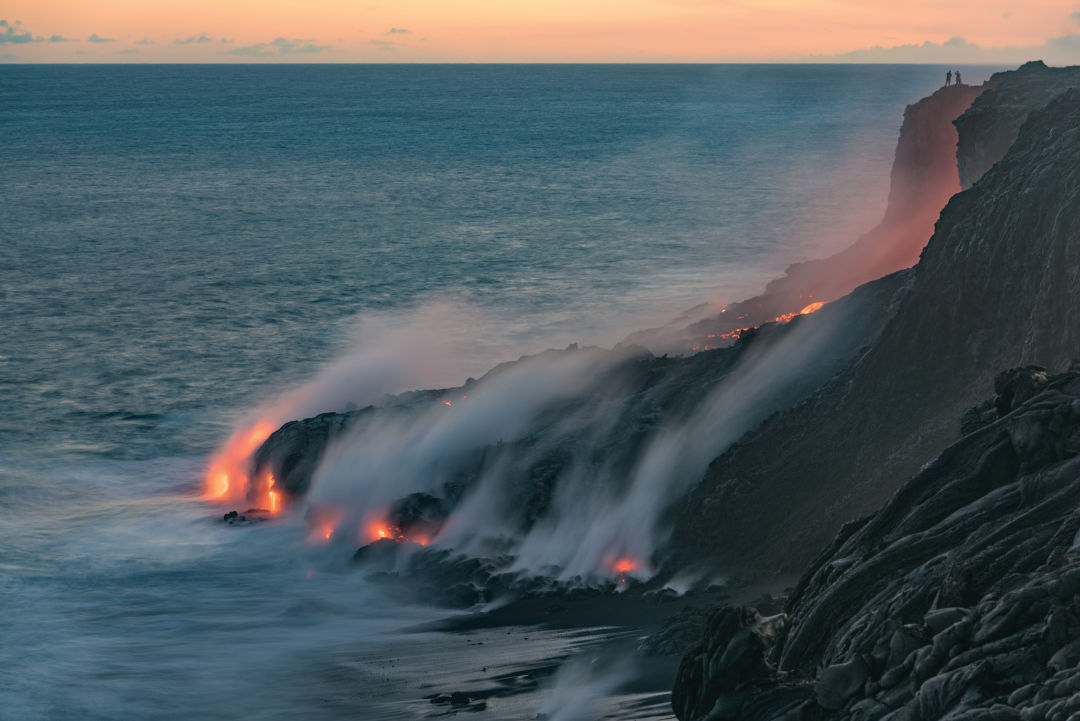
Lava from the Kilauea volcano at Hawaii Volcanoes National Park
Uncle Robert’s market hits all the senses. Upbeat melodies and the cheerful sounds of ukulele and slack-key guitar drift over the weekly gathering, the crowd occasionally clearing for hula performances. The smell of lau lau (roasted pork wrapped in taro leaves) wafts through the market stalls, each packed with a colorful array of local produce, handmade jewelry, or traditional hand-woven coconut-leaf baskets.
What the market doesn’t have is a proper name. Everyone calls it Uncle Robert’s, but various websites and guidebooks have dubbed it Uncle Robert’s Farmers Market, Uncle Robert’s Night Market, or Uncle Robert’s Awa Bar. Every Wednesday, Big Island locals stream to Kalapana, a tiny town outside the park on the eastern coast, for the gathering.
Though long known as the Big Island, the more correct Island of Hawaii name has caught on in recent years. It’s the newest of the Hawaiian islands and bigger than the rest put together, yet somehow more rural and laid back than its sisters.
Locals and visitors alike flock to a spot near Kalapana to watch hot molten lava from the long-active flow of Kīlauea volcano ooze into the Pacific Ocean. It’s more than just a cool sight; Kalapana was decimated by lava flows in the mid-’80s and early ’90s. Somehow, the homestead of Robert Keli‘iho‘omalu, a local community leader and the market’s namesake, was spared. As a way to celebrate and give back to the community, Robert and his family opened up the property to the paying public. They created a sundry store and small venue that held concerts and events, which morphed into the weekly night market that exists today.
What to do on the Big Island
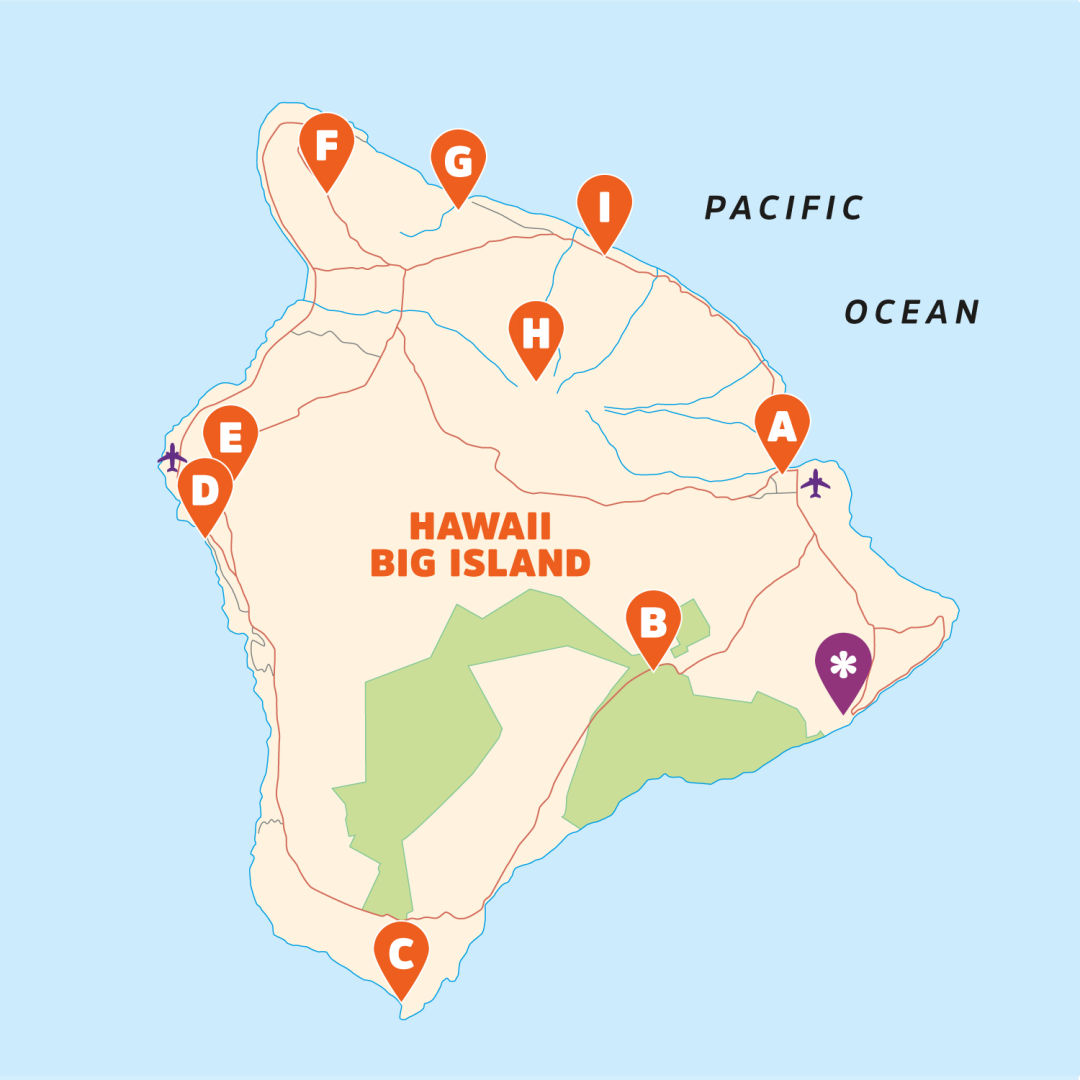
A. Shop Local
The Hilo Farmers Market is a daily affair and more expansive than Robert’s. More than 200 vendors sell tropical fruits and artisan foods on Wednesdays and Saturdays, while about 30 stalls are open the rest of the week. hilofarmersmarket.com
B. Hawaii Volcanoes National Park
Kilauea, one of the most active volcanoes on the planet, has been erupting on the Island of Hawaii for decades. The 500-square-mile park is home to hiking trails, visitor centers, lava tubes, sulfur banks, and the bubbling and steaming Halema‘uma‘u crater. nps.gov/havo
C. Head South
Ka Lae, commonly known as South Point, is the southernmost tip of the United States, and though swimming in the rough Pacific isn’t advisable, locals jump from the 40-foot-tall cliffs. Nearby, Papakolea Beach is one of only four green-sand beaches in the world.
D. Dive with Giants
Big Island Divers provides guided scuba night dives using bright lights to attract plankton, which in turn become dinner for graceful manta rays. No scuba certification? A snorkel adventure is available, open to kids 10 and older. bigislanddivers.com
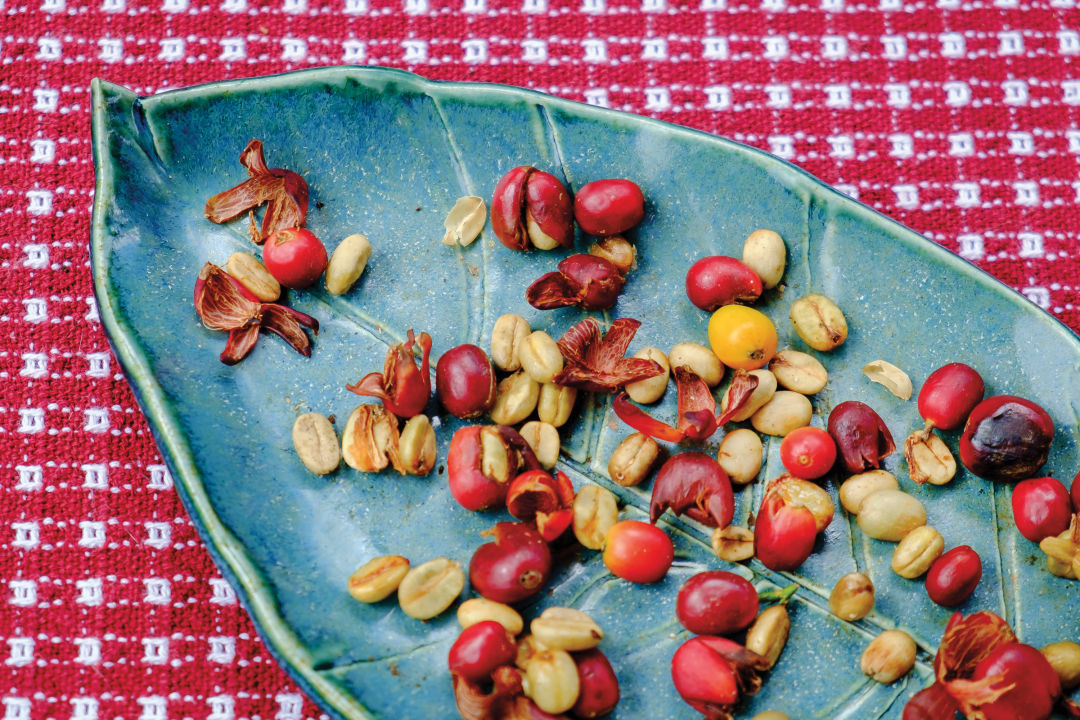
Thunder Mountain coffee beans
Image: Will Austin
E. Drink Kona Coffee from the Source
Mountain Thunder Coffee Plantation offers free tours of its organic farm, plus free sips of its premium coffee. mountainthunder.com
F. Saddle Up
The Island of Hawaii has a rich ranching history that started when explorer George Vancouver gifted five cows to King Kamehameha I in 1788. Ponoholo Ranch offers horseback tours to play at being a paniolo (Hawaiian for “cowboy”) for the day. panioloadventures.com
G. Explore Waipio Valley
The boyhood home of King Kamehameha I is one of the most culturally significant sites in Hawaii, but Waipio Valley’s bottom is only accessible by four-wheel drive, a long hike, a horseback ride, or via a van tour. kapohokine.com
H. Stargaze Atop Mauna Kea
The second-largest telescope in the world sits in the W. M. Keck Observatory atop one of the island’s five volcanoes, Mauna Kea; scientists are hard at work inside, but the visitor’s gallery offers a peek at a giant scope. keckobservatory.org
I. Eat Local
The tiny towns of Paauilo and Waimea both host outposts of Earl’s Snack Shop that sell delicious maki bento sushi rolls, which are stuffed with cooked savory proteins like teriyaki beef, smoked pork, or Korean fried chicken instead of raw fish.
